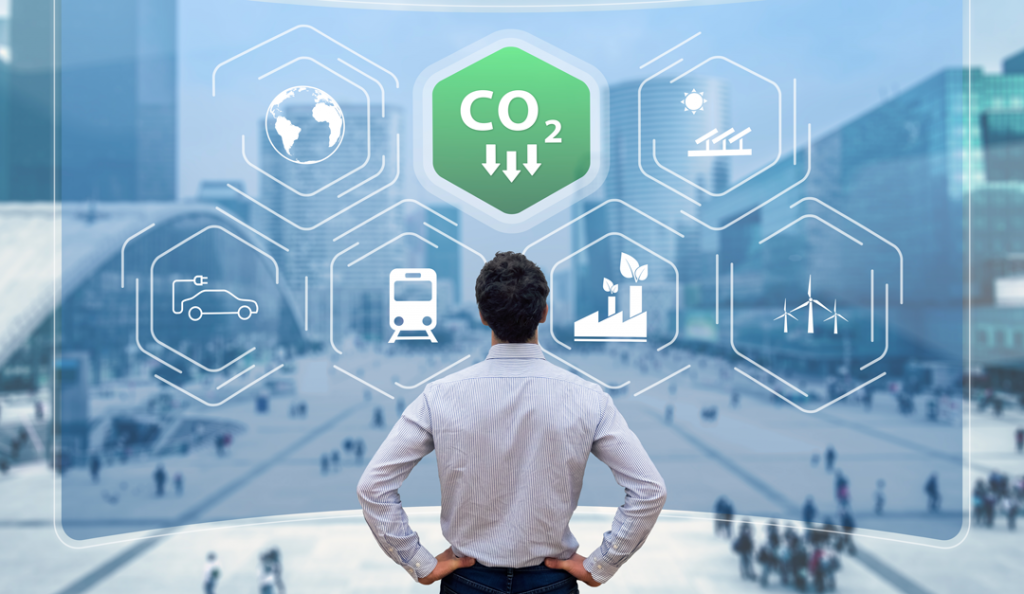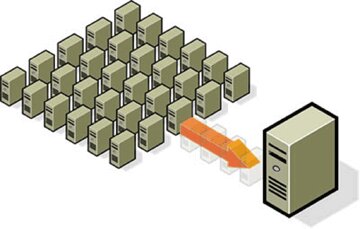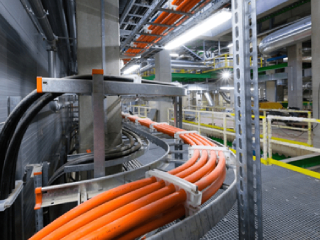Known as the internet’s brain, data centers’ job is to process, store and communicate the data that powers the flow of information services. This includes video streaming, email, social networking, online collaboration, and computing.
The environmental impact of such a great facility is a common topic. The United States consumed 73 billion kWh of electricity. And this will continue to rise as innovation continues. Data Centers have a large carbon footprint. This is why the world’s largest corporations and data center operators are investing in renewable energy sources.
Data Center Energy Requirement
Data centers already consume around 200 terawatt-hours (TWh) each year. That is about 2% of worldwide carbon emission. This carbon footprint is comparable to that of the aviation industry’s fuel emissions. And it’s difficult to predict what might happen in the future due to the increasing demand.
The most alarming projection, ICT, would consume more than 20% of global electricity by the time a child born today reaches their teens. If the intensive cryptocurrency Bitcoin continues to expand, energy demand could skyrocket sooner rather than later.
CO2 Emissions?

Photo Credit: www.unitedlayer.com
Microsoft is responsible for 16 million metric tons of emissions per year, which includes data centers, electronic component manufacturing, and energy usage by Xbox gamers at home. Carbon dioxide and other greenhouse gasses contribute to climate change and air pollution, which can lead to respiratory ailments. Extreme weather, more wildfires, and food supply shortages are all possible outcomes.
So it’s a big thing when a corporation commits to not only reducing carbon emissions but also becoming carbon-negative by 2030. If more businesses worked toward this goal, the world would be a very different place.
Renewable Energy Sources And Capabilities
Power Of The Sun
There are various reasons why solar power is an excellent choice as a renewable energy source in data centers. Solar energy costs are predictable, but the cost of fossil fuels is subject to a variety of factors and is always fluctuating. Solar power is also self-contained and, for the most part, self-managed, so it is not affected by power outages or spikes. It also offers a safe capacity.
Blowing In The Wind
Predictability and cost are at the top of The Energy Collective’s list of reasons why wind power might be worth the effort when solar power is not. Wind energy is also more stable than fossil fuel electricity, which fluctuates based on the price of a barrel of oil. High-cost volatility is not a popular quality, especially in the data center market, where the client’s primary concern is availability. With these benefits in mind, it’s no surprise that wind power is gaining traction among technology decision-makers.
Hydroelectricity
Hydropower, as a renewable energy source, is suitable for powering green data centers that have a low environmental impact. Hydroelectricity gives the crucial advantage of being able to synchronize power generation needs.
Hydroelectric power plants produce natural and renewable energy at cheap production costs. It generates around 10% of the energy used in the United States. The Grand Coulee Dam on Washington’s Columbia River is producing 6.8 million kilowatts of energy. Making it the largest producer of hydropower in the United States. That’s over 2 million more than Niagara Falls when both sides of the border are considered. To achieve the same peak output, 3,400 2-megawatt wind turbines or 17,000 acres of solar panels would be required.
Goal For Sustainability Of The Data Center Industry?
Although some of the world’s largest firms like Google and Apple announced that they have achieved 100% renewable energy. Most companies and enterprises around the world are still far behind. In 2019, a global survey of data center specialists was performed, asking the expectorate what percentage of a data center’s power will come from solar or wind by 2025. The result came out with more than 800 data center professionals expecting a 13% increase. The government’s backing for renewable energy projects has been questioned. In both the United States and China, subsidies for wind energy development are being phased off. If government incentives for renewable energy projects continue to be cut, companies may be less willing to adapt existing systems to solar power. While some countries are cutting back on aid, others are pushing for a bigger proportion of renewable energy usage. The European Union has rewritten the Renewable Energy Directive. This is to increase the percentage of renewable energy to 32%. Apple, Google, and Amazon, as well as those governments that are still pushing for renewable energy, give the sector hope for a cleaner future. The data center industry’s renewable percentage may not be as low as 13% or as high as Google and Apple’s, but there is still hope that by 2025, the entire industry will be 20% renewable on average.
Using Renewable Energy Alone Is Not Enough

Photo Credit: www.greenmatch.co.uk
The spread of COVID19 resulted in more remote work. Therefore, reduced commuting, and a drop in air travel, resulting in a 6% reduction in energy-related carbon dioxide emissions in 2020.
However, without a determined plan for a sustainable reduction in CO2 levels, climate change, and its consequences will continue. Carbon emissions are already reverting to pre-pandemic levels.
As the world’s economy is turning into digitalization, it is time to address the effects of a large amount of energy data centers use.
Indeed, according to a recent poll of senior IT professionals at 100 organizations spending over $1 million per year on cloud computing, CPU utilization is only between 20% and 40% for more than half of these businesses. These underutilized, largely inactive servers continue to consume significant quantities of energy, inflicting excessive expenditures on organizations and adding to tens of millions, if not hundreds of millions, of tons of CO2 emissions.
Here are some other strategies to implement to lessen carbon emissions in data centers:
Cooling technology plays an important role in the effort towards making data more energy efficient. Not only does an efficient cooling system reduce the energy consumption, but it can improve the potential for utilizing the excess heat by capturing it at even higher temperatures.
Most data centers use conventional air-based cooling systems, which are simple and cheap. The downside is that they are not an efficient way of removing heat and therefore result in high energy consumption and low excess heat temperatures. By using a data center management solution’s cooling analysis function, for example, IT staff can lower cooling costs by safely raising the temperature of the room, thereby improving
power usage effectiveness (PUE) and energy efficiency, while continuously monitoring hardware for temperature issues.
-
Server Optimization

Photo Credit: www.smc-sol.com
Optimizing servers for individual application demands and challenges can help data centers to save energy, power, and electricity. Data centers aren’t using the full potential of virtualization, cloud technology, or related resources; they’re overprovisioning, allocating applications inefficiently, and managing infrastructure inefficiently. By introducing new software performance optimization, data centers can cost-effectively impact carbon footprint.
These new software-based optimization approaches vary in how they balance cost/performance tradeoffs and how easily they can impact data center energy efficiency. Resource management and workload orchestration methods automatically match workloads to resources for provisioning, placement, and sizing. Configuration tuning optimization methods provide automated parameter modification across the technical stack for determining the best workload configuration.
Application-driven resource management optimization is the newest real-time approach that adapts to specific workload needs at the moment, continuously optimizing performance in the OS and kernel. These optimization methods reduce power consumption in servers by boosting server utilization rates to over 80% and removing idle servers, without sacrificing availability. The result is less server waste, less electricity usage, less physical rack space, and more total energy savings with better PUE.
Artificial Intelligence is being utilized to evaluate large amounts of meteorological data to forecast when a charge will occur. Managers can benefit from this knowledge by better understanding and calculating the scope of obtaining, storing, and distributing renewable energy.
By evaluating grids before and after they are absorbed, AI can also assist in managing distribution to storage and balancing power spikes. This will aid in the reduction of power congestion. AI systems can also be used to govern and regulate how and where power is distributed. AI is already being used by several energy businesses to improve their systems. Artificial intelligence is already being employed in data center operations, but it will also be one of the factors that aid in the mass adoption of renewable energy.
- Data Center Infrastructure Management Software
AKCPro servers are key environmental performance indicators on a daily basis, feed internal reports, and intelligently manage resources according to set thresholds of the data center’s operators.
Modern data centers ensure a steady operating environment for servers by maintaining strict temperature controls, which, ironically, also allows for the centralized implementation of many energy-saving and environmentally friendly initiatives. AKCPro Central Monitoring Server includes simulations that use real-time monitoring data to enable ongoing improvements and validation of cooling strategy and air handling options that can have a significant financial impact.
Conclusion
What was once known as “alternative” energy sources, are now known as “renewable” energy sources. People have come to realize that these sources shouldn’t just be looked at as an alternative but as a necessity. Using renewable energy reduces greenhouse gas emissions, reduces fossil fuel imports, and will help progress the local industry and create new jobs.
As the world continues to move into this mindset, this just means that solar power and other renewable energy will be the future of data center operations. Some of the biggest companies including Apple, Microsoft, Google, and Amazon are already leading the charge.
Reference Links:









